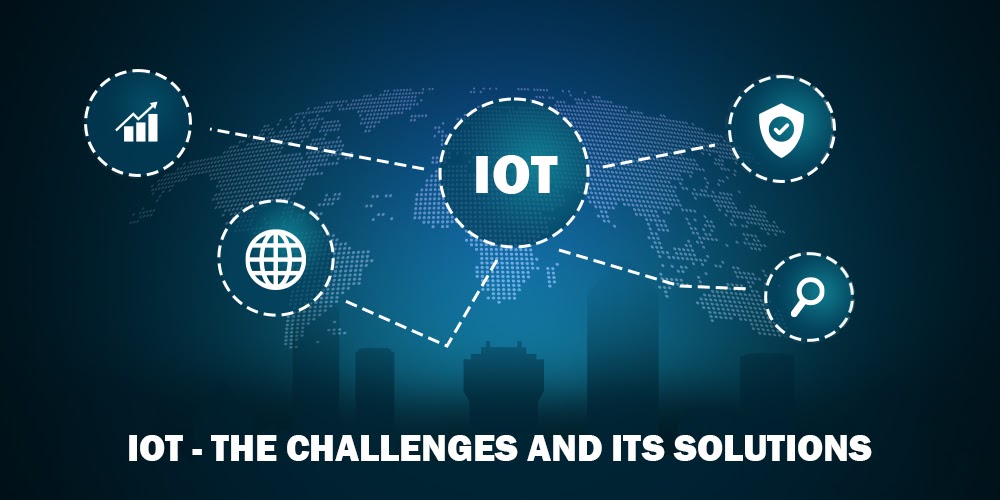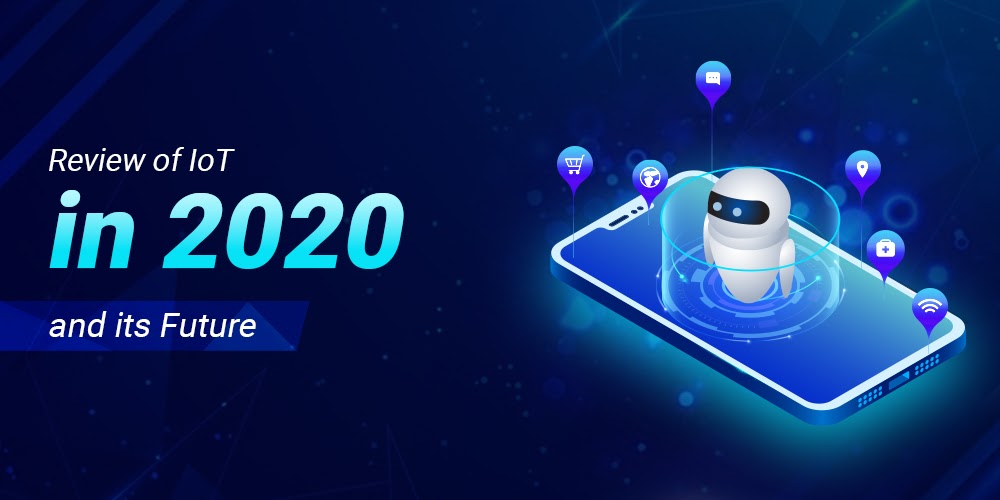By 2025, forecasts suggest that there will be more than 75 billion Internet of Things (IoT) connected devices in use. This would be a nearly threefold increase from the IoT installed base in 2019.
Source: Statista
There are countless physical devices around the world that are connected via the internet. There is interchanging of data going on every second. It is pretty much adding digital intelligence to devices with sensors and no human assistance. With times changing, this innovation is getting bigger, better, and impactful on our everyday lives. Businesses are integrating the Internet of Things into their various work models and are observing impactful outcomes for themselves. Nevertheless, there are still some obstacles that come the developers way and they are doing their best to overcome them.
Data security and Privacy concerns
IoT is doing things in wonderful ways around the world. There are more and more devices being added to the IoT network and there are also vulnerabilities associated with every other device. Besides, there’s also tonnes of data being produced every minute that is harnessed, distributed, stored, and processed by all big and small businesses using the Internet of Technology. This massive amount of data that is produced is difficult to manage even with technology such as Artificial Intelligence and its algorithms.
As long as there exists inadequate IoT security standards, the developers will continue to create devices with poor security systems. Weak passwords, hardware shortcomings, an unsafe update mechanism, insecure data transfer and storage, and unpatched softwares and operating systems are the underlined obstacles that are seen in IoT devices and are seen to exist from the manufacturers end.
Other than that, the importance of being aware of the ways that can help us stay safe on the world wide web is also crucial. The internet users must know how to avoid spam and phishing mails, execute virus scans on their computer systems, keep strong passwords, and to know how to have a secure wifi system, and good understanding of the IoT functionality. And, on the other hand the manufacturers need to carry out proper testing before bringing out the product in the market. Or else there are of course potential threats to the security of the user but such a breach on the company’s end is capable of destroying their reputation.
The report states, “Through the first six months of 2019, SonicWall has registered 2.4 million encrypted attacks, almost eclipsing the 2018 full-year total in half the time. This marks a 76 percent year-to-date increase.”
Source: Forbes
The devices connecting to the IoT infrastructure are on the rise but so are the number of malware and ransomware that are exploiting the system. These attacks to the system have the potential to affect the device’s functionality but they also steal user’s sensitive data like credentials, location, personal data, and more. There are also several Blockchain and IoT technology companies that work together where IoT applications and IoT development platforms rely on Blockchain to monitor and update the applications round the clock, the whole purpose being prevention of cryptocurrency exploitation.
Connectivity and Communication
Connectivity and communication has changed our lives and made people’s life comfortable in unbelievable ways. Though, there is a seamless flow of data between the devices, cloud, and applications that seems challenging. The sensors, actuators, and the people are all interconnected in an Internet of Things system. There is transfer of streams of data between the three all the time which makes connectivity an important part of IoT.
You may also read the IoT data collection and reporting
It becomes difficult for software developers to keep up with the latest technologies and to ensure that the devices work smoothly despite the changes and upgradations. Developers come up with versatile solutions to confront the connectivity problems. The solutions that should be simple, inexpensive, and able to be used in both R&D and manufacturing to leverage code and minimize measurement correlation issues across the different phases of development. Here, connectivity is evaluated on various terms like the frequency bands, MAC protocols, other network protocols, mobility, and more. At the global level, the network becomes more complex with other heterogenous networks with slow connectivity, fast connectivity, proxy servers, firewalls and more disrupting the connection. This makes it difficult for developers to control the connectivity. The process of transferring data majorly depends on good connectivity. Nevertheless, there are several factors that impact good connectivity.
Factor_1. In a big IoT setup, there are processors, user and communication interfaces involved with immense amounts of power which make the networking complex. Hence, there is a need to efficiently manage the power usage or else it can in some or the other way affect connectivity.
Factor_2. Bandwidth consumption is anyways expensive and like in most cases, when there is an outsized amount of IoT devices involved with server issues, the connectivity issues rise.
Factor_3. Over the times, there are different connectivity standards that have been introduced in the industry. And, to avoid any sort of connectivity issue, it is necessary to choose the appropriate and compatible standard/IoT protocol as per the requirement.
Factor_4. For transportation of data between devices, a credible bidirectional signalling is essential to abstain from any problem in the connectivity.
Factor_5. It is important to ensure immediate detection of IoT devices going online and offline so that any problem that has arised in the network can be fixed which is again to avoid connectivity problems.
The global Internet of Things (IoT) market size stood at USD 250.72 billion in 2019 and is projected to reach USD 1,463.19 billion by 2027, exhibiting a CAGR of 24.9% during the forecast period.
Source: Fortunebusinessinsights
Compatibility Issues
As the technology is evolving and expanding in different paths, the IoT challenges in compatibility are increasing simultaneously. There are rising compatibility issues coming from operating systems, varied firmwares, the non-unified cloud services, poor standardized M2M protocols, and others. Other than that, there are several technologies competing to make a mark and become definitive and this is calling for deployment of any additional hardware or software devices.
Hardware (sensors, IoT gateways, actuators, and more) and device compatibility together build an IoT network. Therefore, this challenge can be a roadblock for successful IoT implementation. Any device discontinuation by its manufacturer, device failure on the developer’s end, or not being able to replace a specific device should not be the area of concern and this is where compatibility of devices needs to be taken care of so that IoT appliances can function without any hurdle.
Undoubtedly, the internet of things has opened the doors to a galore of opportunities and intriguing applications for many industries in the market. But again, there are varying complexities also that come our way. Indeed, it is a tough nut to crack but there is the need to deeply understand the problems and look for solutions that are the right fit to build a robust cornerstone and get our way. One such company that is contributing in its own way to overcome these technical challenges and present state-of-the-art IoT services to its clients is Logic Simplified. An IoT app development company based out of Dehradun that works towards using the right design, validation, testing, protocols/standards, manufacturing and IoT security solutions to ensure that they deliver what is expected of them with utmost attention to detail and quality.
 Get a Quote
Get a Quote













